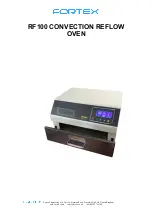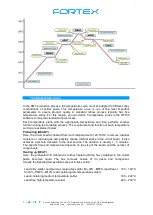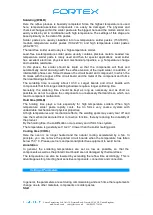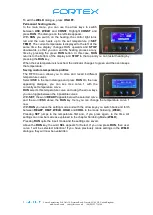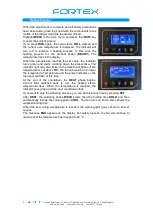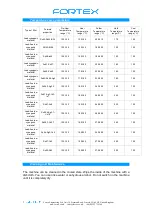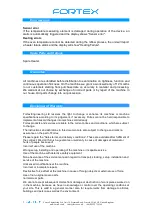
Fortex Engineering Ltd, Unit 16, Freeman Road, Lincoln, LN6 9AP, United Kingdom
www.fortex.co.uk [email protected] +44(0)1522 718 168
Danger of fire and burns
During operation, the stove becomes hot and it must therefore only be operated under
supervision. Long heating times and high heating temperatures can lead to overheating
of the stove, which in turn may cause fire.
When placing PCBs into the oven or removing them, wear suitable gloves or use
fireproof equipment.
If the stove generates too much smoke, pull the plug and close the door. That stifles the
flames.
Do not place flammable materials in the vicinity or on the reflow oven.
Do not block the ventilation grilles.
Do not touch the cover of the stove, it can be very hot and you risk severe skin burns.
Do not place flammable, explosive or other hazardous substances near the reflow oven.
Do not dry objects that emit flammable and explosive gases!
Never set a temperature higher than 300 ° C!
The stove is not designed for that and
could be damaged. We exclude a guarantee for this!
Exhaust
Use the oven only in well-ventilated areas. Follow the safety rules of the solder paste and
adhesive suppliers. During the soldering process gases can arise. These gases may
endanger your health. We recommend the use of a hood or an alternative extractor
option!
1. Check the proper function of the stove using the following checklist:
2. Check the drawer. The drawer must not be kinked or damaged. Do not use the
oven if something is stuck between the lock and the ceiling. If the drawer is
damaged, do not use the oven
3. Check the seal for damage
4. Check if the oven room is free of dents.
5. Check the power cord, plug and socket for damage.
Maintenance
Clean the oven regularly. A dirty stove can lead to dangerous situations.
Do not insert wire or other foreign objects into the air inlet and outlet to avoid burns or
damage to ventilation and heat.
Do not wash the machine directly with water in order not to affect the insulation
performance of the machine.
Note:
The oven temperature is measured from the air in the upper area of the heating
compartment. The temperature on the workpiece can vary due to radiation, conduction
and reflection. For sensitive materials, we recommend test runs to determine the optimal
process parameters. Different measuring devices may be recommended.

